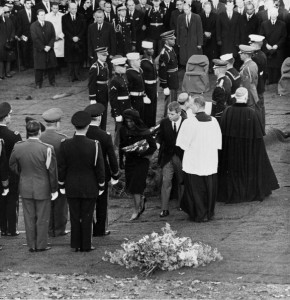 1. What do you see in this picture?
1. What do you see in this picture?
We see a man and some flowers.
2. What is the man doing?
The man is holding a pot of flowers.
3. What is he surrounded by?
He is surrounded by many pots and containers of flowers.
4. Are there a lot of flowers, or a little?
There are a lot of flowers.
5. What types of flowers do you see?
We can see tulips, lilies, pansies, and petunias.
6. Where can you buy flowers?
You can buy flowers at a flower shop.
7. What do you call a person who works with growing or arranging flowers?
A person who works with growing flowers or arranging flowers is called a florist.
8. What is another name for a place where you can buy flowers?
Another name for a place where you can buy flowers is called the florist’s (shop).
9. What are some popular flowers to buy?
Some popular flowers are tulips, orchids, carnations, mums (chrysanthemums), and roses.
10. What are some spring flowers?
Some spring flowers are roses, tulips, jonquils, crocuses, and daffodils.
11. What are some summer flowers?
Some summer flowers are daisies, baby’s breath, and carnations.
12. What are some fall flowers?
Some fall flowers are orchids, asters, and mums.
13. What type of flower has thorns?
Roses have thorns.
14. What reasons are there to buy flowers?
Flowers are bought for many reasons. A man might buy flowers for his sweetheart. People might buy flowers to cheer someone up, or to brighten up a sick room. Flowers are also bought to congratulate someone – for example, on the birth of a child. Flowers are also used in weddings and funerals.
15. For what occasions is it appropriate to give flowers as a gift?
Flowers make an appropriate gift for a wedding or baby shower, for a Valentine’s day present, for a get-well present, or for a housewarming gift.
16. What do you call a group of flowers that you give someone?
A group of flowers that you give to someone is called a bouquet.
17. What do you call the group of flowers that a bride carries down the aisle?
The group of flowers that a bride carries down the aisle is called a bridal bouquet.
18. What do you call a circular arrangement of flowers?
A circular arrangement of flowers is called a wreath.
19. How can you send flowers to someone who lives in another city?
If you want to send flowers to someone who lives in another city, you can go to the florist and ask them to “wire” flowers to the other person. Your florist will take your order and contact a local florist in the other city, who will then fulfill the order and deliver the flowers in person for you.
20. How can you preserve flowers?
Flowers can be preserved by drying. They can be dried out by pressing them in a book. You can also preserver flowers by letting them hang upside down in a corner of the room until they have dried out. It is also possible to speed up the drying process by using a microwave to dry out the flowers.
Paragraph: At the Florist
Write a brief paragraph about the last time you went to the florist. What kind of flowers did you get? Were they for a happy occasion, or a sad one? What are some reasons why you might go to a florist?
 One time I needed to get some flowers to give as a “hostess gift” when I was invited to lunch. I wanted to show my appreciation to the lady of the house, so I thought a nice flower arrangement would be the perfect thing for her. On the way to my luncheon engagement, I stopped by the supermarket and visited the floral section. There they had a beautiful floral arrangement with different kinds of blue and white flowers. I purchased this arrangement and brought it with me to the luncheon engagement. When the lady of the house saw it, she thanked me profusely and told me she thought it was especially lovely, because she liked the colors of the blue and white flowers. I was glad she appreciated the hostess gift.
One time I needed to get some flowers to give as a “hostess gift” when I was invited to lunch. I wanted to show my appreciation to the lady of the house, so I thought a nice flower arrangement would be the perfect thing for her. On the way to my luncheon engagement, I stopped by the supermarket and visited the floral section. There they had a beautiful floral arrangement with different kinds of blue and white flowers. I purchased this arrangement and brought it with me to the luncheon engagement. When the lady of the house saw it, she thanked me profusely and told me she thought it was especially lovely, because she liked the colors of the blue and white flowers. I was glad she appreciated the hostess gift.
Google










